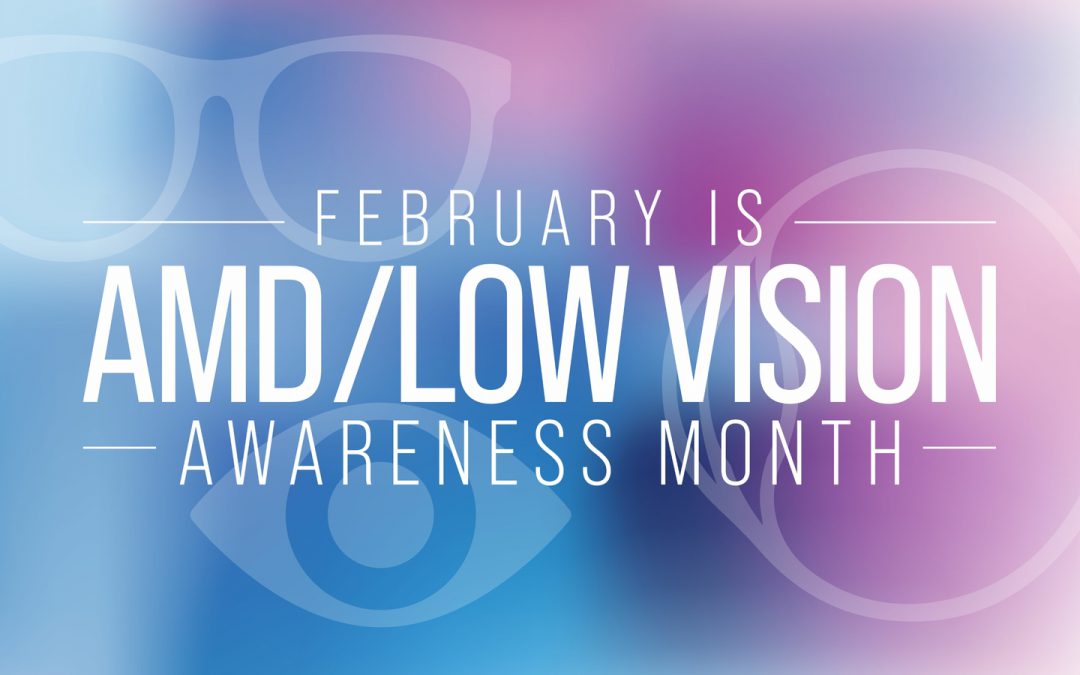February is Low Vision and Age-Related Macular Degeneration (AMD) Awareness Month and an appropriate time to remind organizations about how important it is to ensure digital materials are accessible for all. Despite their significance, many individuals remain unaware of the prevalence and impact of these conditions, even those with these visual disabilities. According to the National Eye Institute (NEI), an estimated 4.2 million Americans aged 40 and older are visually impaired, with 3 million of them experiencing low vision. It’s imperative to grasp the nuances of low vision, its detection, and how to enhance safety and accessibility for those affected. With the aim of spreading knowledge and understanding, let’s delve into the intricacies of low vision, its impact, and ways to take proactive steps toward accessibility.
Low vision encompasses a permanent decline in vision that conventional aids like eyeglasses, contact lenses, medications, or surgeries cannot rectify. It presents formidable challenges in daily activities, including reading, writing, watching television, driving, recognizing faces, and managing glare. Age-related macular degeneration, commonly referred to as AMD, is a progressive eye condition that affects the macula, the central part of the retina responsible for sharp, central vision. As highlighted by the NEI, AMD is a leading cause of vision loss among people aged 50 and older. It comes in two forms: dry AMD and wet AMD, with varying degrees of severity and treatment options. Those affected may grapple with central vision loss, peripheral vision loss, contrast sensitivity issues, or depth perception difficulties. Dr. Andrea Zimmerman, a Low Vision Specialist at Lighthouse Guild, emphasizes the importance of comprehensive eye exams in detecting conditions like glaucoma, AMD, and diabetic eye disease early on to preserve vision.
Lighthouse Guild recommends practical tips for managing low vision, including employing contrast to distinguish items, utilizing appropriate lighting, and embracing assistive technologies like video magnifiers and smartphones. Despite the emotional hurdles of confronting low vision, numerous resources and coping mechanisms exist to navigate its impact. Technological advancements and rehabilitation strategies offer avenues to improve daily functioning and enhance quality of life for individuals with low vision. These strategies empower individuals to maintain independence and engagement in their daily routines. However, beyond medical interventions, creating inclusive environments and accessible digital spaces is paramount to ensuring equal opportunities and participation for those with low vision.
In the broader context, it’s essential for companies and organizations to prioritize the needs of individuals with low vision and the growing aging community which experiences vision loss as part of the natural aging process, particularly concerning digital accessibility. Companies, regardless of size, can play a pivotal role in fostering accessibility and inclusivity for these demographics.
Recognizing the importance of digital inclusivity, efforts must include document and website accessibility. Access to online resources and information is crucial in today’s digital age. Websites should be designed with features such as high contrast options, resizable text, keyboard navigation, and screen reader compatibility to ensure equal access for all users.
In line with these principles, The Viscardi Center advocates for accessible digital spaces and offers solutions to promote inclusivity. Its focus lies in empowering individuals with the tools they need to navigate digital environments independently. Through collaborative efforts, Viscardi works to make digital platforms and documents accessible to individuals affected by low vision, thus creating a more accessible and equitable digital landscape.
Need help making your digital content accessible to all? Learn how The Viscardi Center’s team of Digital Accessibility experts can help.
 |
Michael Caprara Chief Information Officer, The Viscardi Center |

